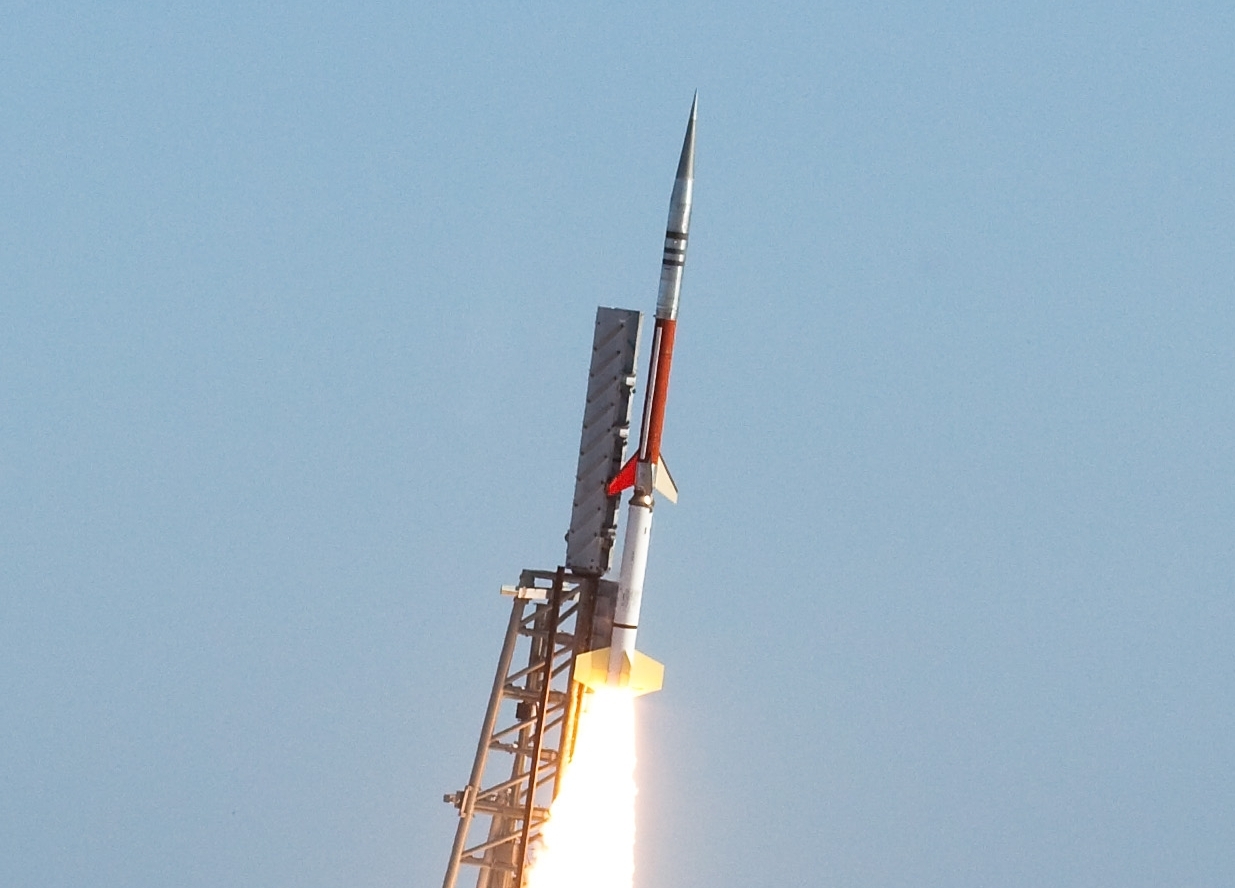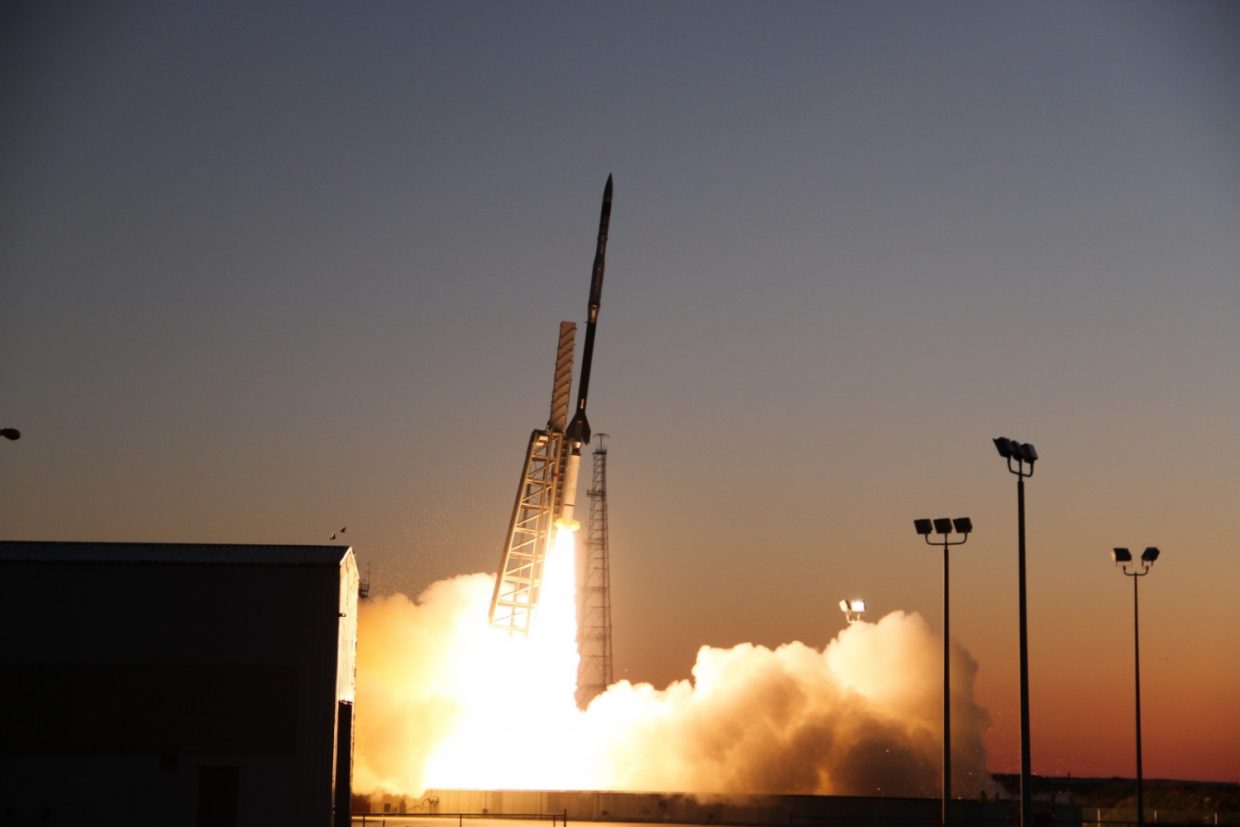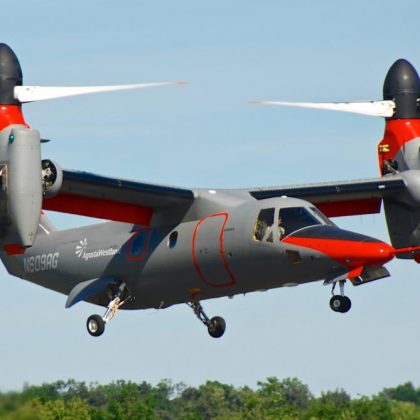A practical design approach for a single-stage sounding rocket to reach a target altitude
More than 99% of air molecules on Earth exist below 50km altitude and therefore, there is certainly an upper limit on altitude for an aircraft to reach, while there is a lower limit on an orbit for a spacecraft to operate, as even a low density of air causes large drag due to the high orbit velocity with an unfavourable effect on its operation duration. In this regard, particularly at an altitude range of 50 to 150km, a sounding rocket is an appropriate measure to explore the atmospheric environment.

Sounding rockets have been used to provide an in-flight test bed for scientific and technological research purposes since the middle of the twentieth century. Today, experimental tests using sounding rockets are conducted not only for atmospheric measurements, but also to gain knowledge of space system integration and flight testing itself, single/multi-stage-to-orbit missions, scientific tests in micro gravity near the apogee, supersonic combustion tests and aerodynamic tests.
In order to perform experimental tests during flight, it is crucial for a sounding rocket to reach a targeted altitude, which is one of the main performance parameters that also determines flight duration and velocity required for mission profiles. Not only from this perspective, but also from an operational efficiency point of view, with emerging economic and cost sensitive design aspects in space technology recently, there is more interest today in the efficient flights maximising the final altitude and minimising propellant consumed.
Since Robert Goddard arguably first reported his effort to maximise the peak altitude of an ascending rocket in 1919, there have been various studies for the same purpose but in different approaches. Early studies dealt with the problem in an analytical approach and accordingly, it requires appropriate assumptions to solve the governing equations. It was mainly about additional constraints such as on drag law model, dynamic pressure limitations, specific flight time, bounded thrust amount, etc. With a certain flight condition, mathematical solutions for the altitude optimisation problem were provided, which were later followed by simulation-based studies with more flight conditions optimised. Both approaches have suggested design guidelines and been beneficial for the performance improvement of sounding rockets, regardless of whether it is physically possible or not to meet the theoretical optimum conditions and requirements.
The results from those approaches on optimum conditions deliver a useful guide for rocket flight conditions with detailed influences of operation conditions and design parameters on the flight performance of rockets. Although the preliminary analysis is informative to some extent, however, it does not necessarily guarantee that suggested optimum conditions are physically feasible, as it was more focused on theoretical solutions with mathematical convenience, rather than the system configuration feasibility from a rocket design point of view. Thus, in relation to optimal flight, further research is required with more interest and emphasis on practical properties conducive to reachable altitude maximisation.
In this paper, “A practical design approach for a single-stage sounding rocket to reach a target altitude”, the main concern is how to address those challenges and provide better solutions from that perspective. Considerable effort was made to determine design variables that are most effective and practical in a sounding rocket design process optimised in terms of the peak altitude. This study also attempts to distinguish itself from research previously done that focused on optimisation in specific conditions without sufficient reference to the physical aspects of rocket design, or on assumptions that were more relevant to mathematical models rather than physical feasibility, lacking sufficient contemplation from a sounding rocket practical development point of view.

In order to acquire practical design parameter values, sounding rockets design specifications were first gathered through literature surveys and effective design parameters were determined. Flight performance data was acquired using an in-house code flight simulator and analysed to understand the effect of the parameters selected on flight performance determining their effectiveness. A new type of design domain has been suggested with a reference for design optimization. Based on the design domain provided, a simplified and intuitive design procedure, the three-variable-design method, has been proposed for a single-stage sounding rocket from a practical design point of view, which is expected to deliver practical benefits to the development process of a target-altitude-optimised single staged sounding rocket.
A practical design approach for a single-stage sounding rocket to reach a target altitude is an open access article.
This research paper appears in the July Volume 126 Issue 1301 edition of The Aeronautical Journal. This journal is the world’s oldest aerospace publication currently in production and has been published by the Royal Aeronautical Society since 1897.
The Royal Aeronautical Society is the world’s only professional body dedicated to the entire aerospace community. Established in 1866 to further the art, science and engineering of aeronautics, the Society has been at the forefront of developments ever since.
www.aerosociety.com
National Aerospace Library catalogue & e-books
Book reviews covering academic, scientific and technical books covering aeronautical engineering and topics relating to it can be found here.
www.aerosociety.com/news-expertise/national-aerospace-library/book-reviews





